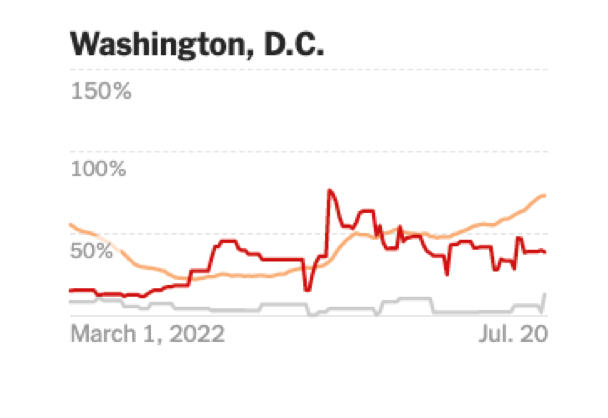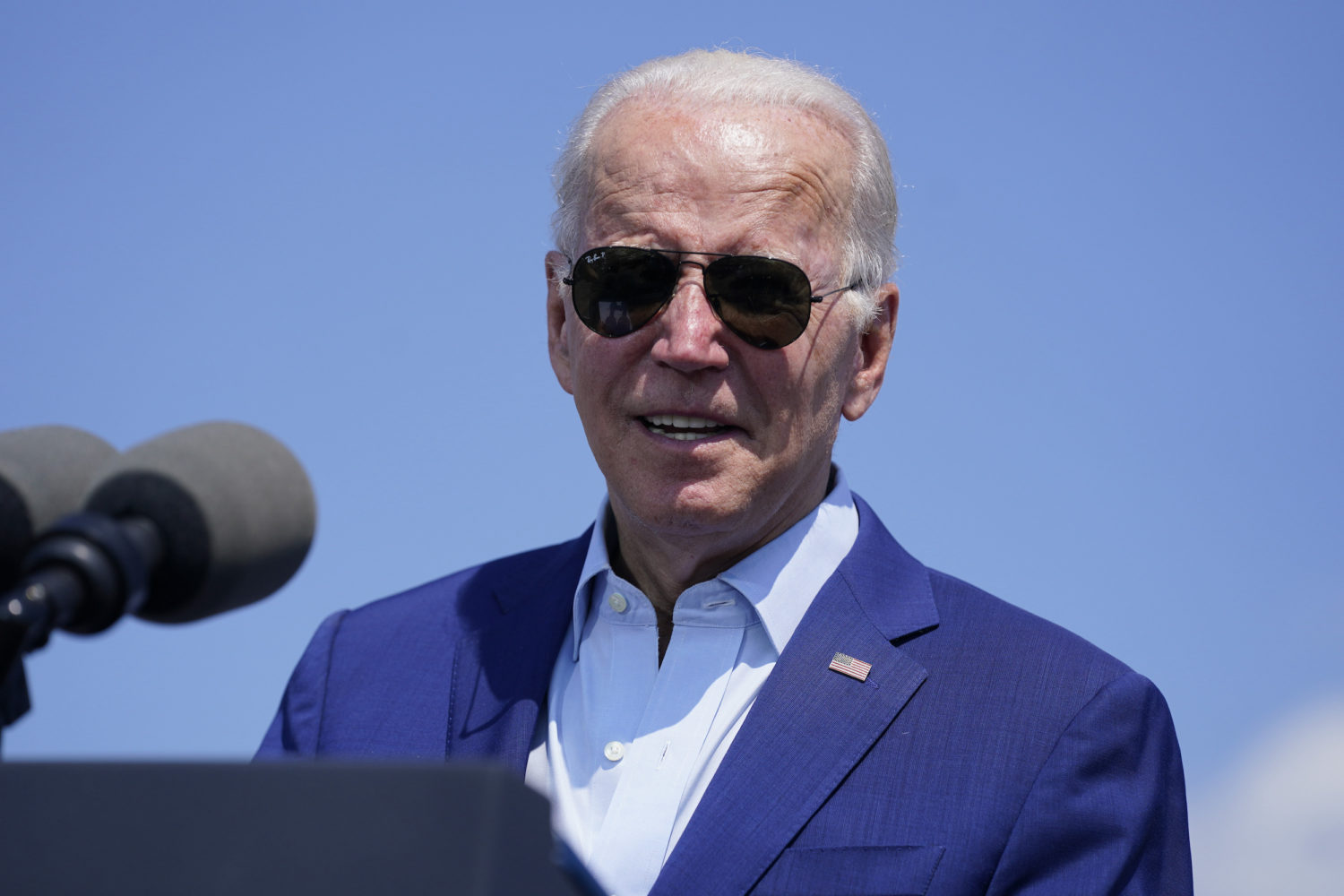On July 21, 2021, President Joe Biden said during a CNN town hall, “You’re not going to get COVID if you have these vaccinations.”
He continued, “This is a simple, basic proposition: If you’re vaccinated, you’re not going to be hospitalized, you’re not going to be in an ICU unit, and you’re not going to die.”
On Thursday — one year later, to the day — the White House announced that Biden tested positive for COVID-19 and has what White House press secretary Karine Jean-Pierre says are “mild symptoms.”
The president was not correct when he said vaccinated people could not get infected a year ago. It is even less true today as the virus finds routes around vaccines and reinfects even fully vaccinated and boosted people, like the president. He was correct when he said people who were vaccinated are less likely to be hospitalized and die. That remains true.
The president is taking the antiviral drug paxlovid, and Jean-Pierre says he is self-isolating but still working.
Biden was vaccinated with the Pfizer/BioNTech vaccine before his January 2021 inauguration. He has received two booster shots, one in September 2021 and the other on March 30.
Biden is 79 years old, which makes him more at risk when infected by the virus.
COVID-19 has swept through the administration just as it has swept through the rest of the country. Among those who were infected this year is Vice President Kamala Harris, who was “fully vaccinated and boosted.” The vice president said she never experienced COVID-19 symptoms and also was treated with paxlovid. She has tested negative since May 2. Second gentleman Doug Emhoff also tested positive.
Secretary of State Antony Blinken and White House domestic policy adviser Susan Rice both tested positive after they attended the White House Correspondents’ Dinner in April.
Former press secretary Jen Psaki tested positive while she was still in the White House, as did House Speaker Nancy Pelosi, Defense Secretary Lloyd Austin, Attorney General Merrick Garland and Commerce Secretary Gina Raimondo. Even the nation’s COVID-19 expert during the pandemic, Dr. Anthony Fauci, recently tested positive.
Biden is the second U.S. president to become infected with COVID-19. President Donald Trump was infected in early October 2020, before the Food and Drug Administration and Centers for Disease Control and Prevention had approved COVID-19 vaccines. He became seriously ill and was hospitalized before he made a prime-time show of returning to the White House. First lady Melania Trump also was infected.
The Biden administration recently renewed the national COVID-19 emergency declaration that provides free at-home tests and antiviral medications.
The president’s infection may restart public interest in the pandemic, which is picking up steam again. Positive cases have risen to levels not seen since last fall.
The New York Times shows some states with double-digit percentage increases in the last two weeks:
In the Washington, D.C., area, hospitalizations are also rising fast. In the New York Times chart below, the red line is the case counts, while the yellow line represents hospitalizations.

(The New York Times)
As of Monday, people aged 70 and older — Biden’s age bracket — are more than three times as likely as younger age groups to be hospitalized with COVID-19.
When would the 25th Amendment kick in?
Over the past few centuries, U.S. presidents have become seriously ill on many occasions. George Washington underwent surgery for a tumor in his first term and was seriously ill with influenza in his second term.
History.com said, “In 1893, Grover Cleveland needed surgery to remove a cancerous tumor in his mouth. To avoid the attention of the press, he had the surgery performed on his friend’s yacht in Long Island Sound.”
Woodrow Wilson nearly died in the pandemic of 1918, but his doctors lied to the public and said he had a cold, not the influenza that had killed millions of people worldwide. Wilson had a stroke in 1919, but never surrendered presidential authority because the stroke was kept secret.
Dwight Eisenhower suffered a heart attack, underwent surgery for Crohn’s disease and had a stroke, but never surrendered his office.
We are apparently a long way from needing to have this conversation, but it is worth raising since people raised it when President Trump was hospitalized with COVID-19: How ill is too ill to remain president?
The 25th Amendment to the U.S. Constitution tells us when it is time for a president to surrender their power because they can’t discharge the duties of the office. The amendment, which you might assume is an old concept, was only ratified in 1965 after President John. F. Kennedy’s death. Section 3 of the amendment says:
Whenever the President transmits to the President pro tempore of the Senate and the Speaker of the House of Representatives his written declaration that he is unable to discharge the powers and duties of his office, and until he transmits to them a written declaration to the contrary, such powers and duties shall be discharged by the Vice President as Acting President.
If there is a disagreement about when a president is able to come back to work, then Section 4 of the 25th Amendment launches a process to decide what to do next. History.com reported:
The third section of the 25th amendment has only been invoked three times in history: During Ronald Reagan’s surgery for colon cancer in 1985 and for George W. Bush’s colonoscopies in 2002 and 2007.
Reagan’s staff considered invoking the fourth section of the 25th amendment when the president began acting strangely in the wake of the Iran-Contra Scandal, but his chief of staff ultimately decided against it. Reagan’s Alzheimer’s diagnosis after he left office has led historians to speculate that he may have been experiencing early symptoms of the disease while serving as president.









